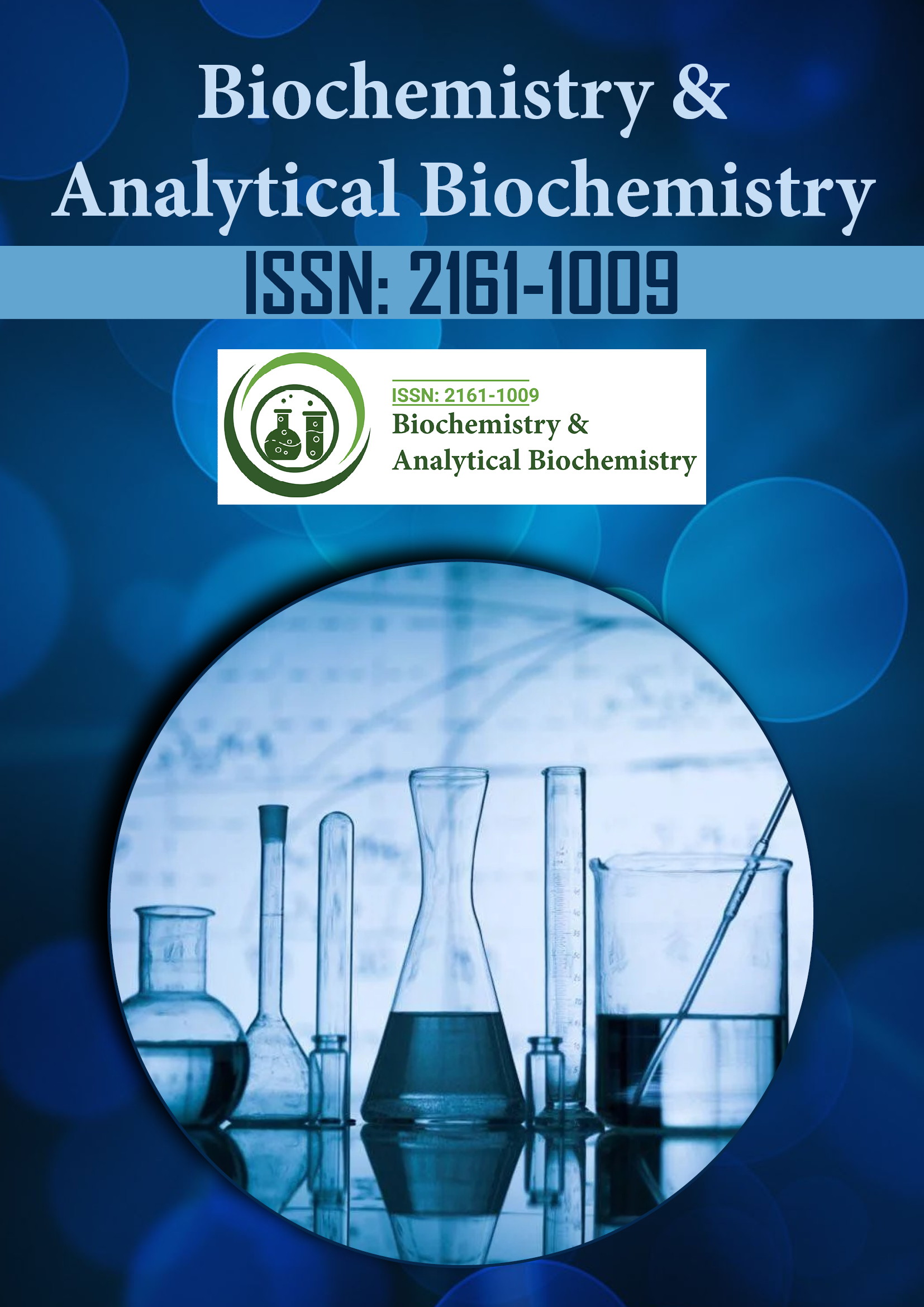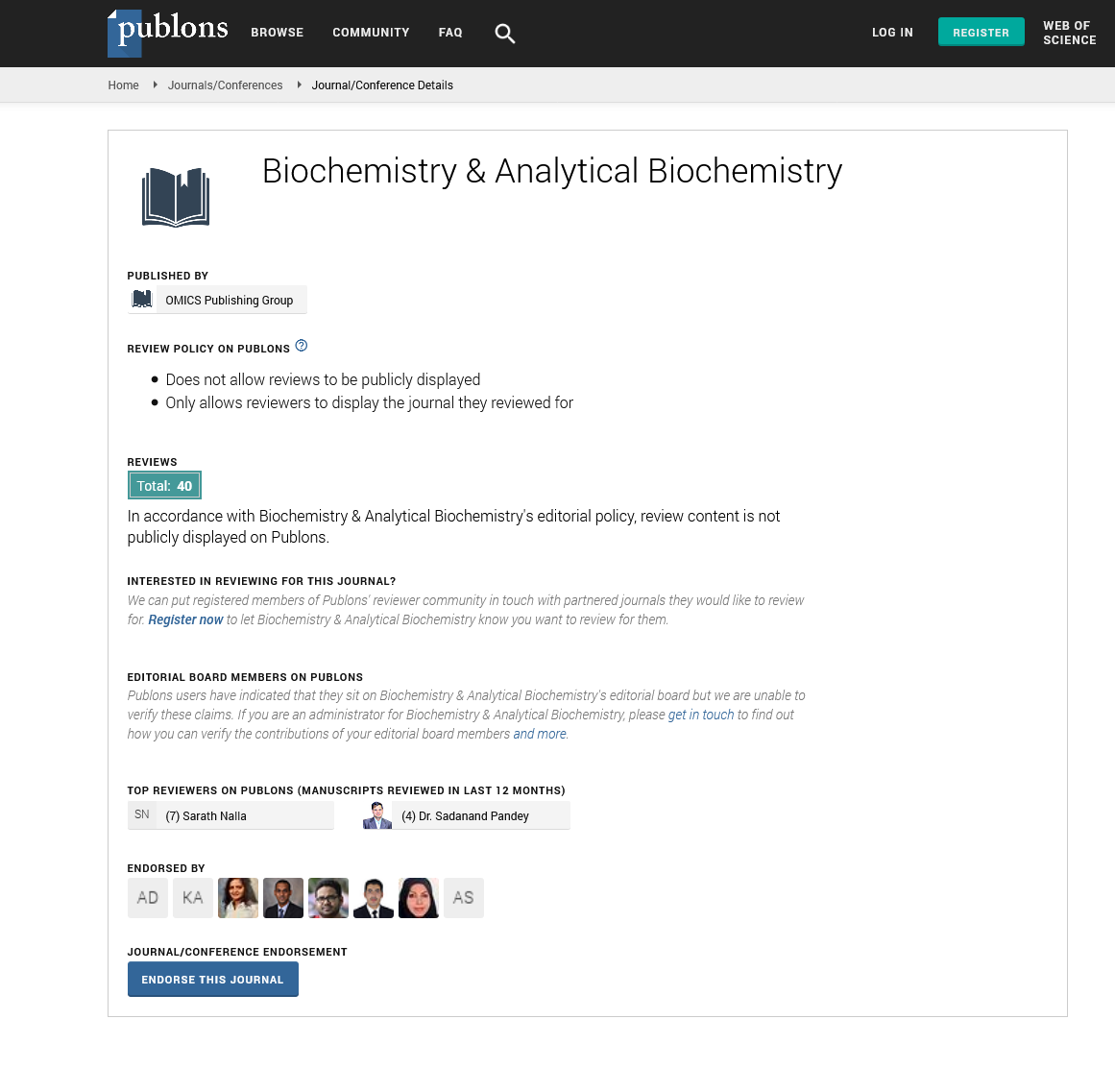Indexed In
- Open J Gate
- Genamics JournalSeek
- ResearchBible
- RefSeek
- Directory of Research Journal Indexing (DRJI)
- Hamdard University
- EBSCO A-Z
- OCLC- WorldCat
- Scholarsteer
- Publons
- MIAR
- Euro Pub
- Google Scholar
Useful Links
Share This Page
Journal Flyer

Open Access Journals
- Agri and Aquaculture
- Biochemistry
- Bioinformatics & Systems Biology
- Business & Management
- Chemistry
- Clinical Sciences
- Engineering
- Food & Nutrition
- General Science
- Genetics & Molecular Biology
- Immunology & Microbiology
- Medical Sciences
- Neuroscience & Psychology
- Nursing & Health Care
- Pharmaceutical Sciences
Commentary - (2021) Volume 10, Issue 12
Brief Note on Biomolecule Immobilization
Susanne J Kuhel*Received: 07-Dec-2021 Published: 28-Dec-2021
Description
Biomolecules that have been chemically functionalized with aniline or diazotated derivates could be utilised to create complex architectures that serve as sensing layers for biosensors, biochips, and other bioelectronic devices. Furthermore, the use of SPR opens up new possibilities for characterizing grafted surfaces and developing label-free tests. These functionalized surfaces have use in multiparametric sandwich assays, label-free detection and imaging of macromolecular interactions by SPRi,and dehydrogenase immobilization via its cofactor.
Physical absorption, bioactive ink trapping, bioaffinity attachment, and covalent chemical bonding immobilization are the four categories of immobilization procedures. Each technique has its own immobilization properties. Despite the fact that every biomolecule–paper combination must be tuned before use, bioactive ink entrapment is the most often utilised method due to its broad application and biocompatibility. There are currently four common applications of bioactive paper: (1) sample conditioning with paper-based bioassays or paper-based analytical devices; (2) counterfeiting and countertempering in the packaging and construction industries; (3) pathogen detection for food and water quality monitoring; and (4) pathogen deactivation with antimicrobial paper.
For the use of biochemical capabilities of active biomolecules, the encapsulation or development of novel surfaces that can fix biomolecules firmly without affecting their original conformations and activity remains a challenge. Sol–gel chemistry currently provides new and exciting prospects for the prospective encapsulation of heat-sensitive and fragile biomolecules because it is a low-temperature, biocompatible method. The hydrolysis commences the normal sol–gel process, which is carried out in the presence of the active biomolecule. Cross-linking occurs when the M-monomers are hydrolyzed and condensed in the presence of an acid or base catalyst, resulting in the creation of amorphous, a porous inorganic matrix that grows three-dimensionally around the biomolecule.
Chemical stability, physical stiffness, low swelling in aqueous solution, tunable porosity, great photochemical and thermal stability, and optical visibility are all characteristics of this class of sol–gel matrices. These appealing characteristics have sparked a lot of interest in optical and electrochemical biosensors, which could be valuable in medical, environmental, and industrial settings. Sol–gel encapsulated organelles, on the other hand, have been transplanted into living systems, and plant/animal/ microbial cells have been used to produce commercially relevant metabolites. The advantages, current discoveries, uses, and future views of sol–gel immobilized biomolecules.
Recent microfluidic and bio diagnostic chip result of rapid prefer polymer materials over glass, particularly for optical and cost reasons. To suit polymer substrates, existing chemical procedures for preparing biomolecule microarrays on glass slides must be altered or replaced.
Scientists were able to immobilize DNA onto the polymer substrate using plasma and liquid chemical treatment followed by polyelectrolyte coating, resulting in stable and adaptable biosensor surfaces. They showed that the coated Zeonor substrates are stable and can be used not only in DNA chip technology but also in protein chip technology with DNAdirected protein immobilization.
Upon oxidized silicon and gold surfaces, spin-coated thin films of Poly (N-Hydroxysuccinimidyl Methacrylate) (PNHSMA) were studied as reactive layers for producing platforms for biomolecule immobilization with high molecular loading. Fourier Transform Infrared Spectroscopy (FTIR), X-ray Photoelectron Spectroscopy (XPS), fluorescence microscopy, and ellipsometry measurements were used to determine the surface reactivity of PNHSMA films in coupling reactions with various amine-terminated Poly Ethylene Glycol (PEG-NH2) and other primary amines. Under the same conditions, the rate constants of PEG-NH2 attachment on PNHSMA films were substantially higher than the coupling on Self-Assembled Monolayers (SAMs) of 11, 11’-dithiobis (N-Hydroxysuccinimidylundecanoate) (NHSC10) on gold.
Most importantly, the PEG loading in the polymer thin films was nearly three times higher. These findings suggest that the coupling reactions are not limited to the polymer films' very surface, but also extend into the near-surface areas. In contact with aqueous buffer, PNHSMA films were shown to be stable; Atomic Force Microscopy (AFM) swelling investigation revealed a film thickness independent swelling of 2 nm. Surface plasmon resonance revealed an increase in loading for the covalent immobilizations of amino-functionalized probe DNA.
Fluorescence microscopy and Surface Plasmon Resonance Enhanced Fluorescence Spectroscopy (SPFS) were used to successfully detect hybridization of fluorescently labelled target DNA, demonstrating that thin films of PNHSMA are an attractive and simple platform for the immobilization of highdensity biomolecules.
Physical absorption, bioactive ink trapping, bioaffinity attachment, and covalent chemical bonding immobilization are the four categories of immobilization procedures. Each technique has its own immobilization properties. Despite the fact that every biomolecule–paper combination must be tuned before use, bioactive ink entrapment is the most often utilised method due to its broad application and biocompatibility. There are currently four common applications of bioactive paper: (1) sample conditioning with paper-based bioassays or paper-based analytical devices; (2) counterfeiting and countertempering in the packaging and construction industries; (3) pathogen detection for food and water quality monitoring; and (4) pathogen deactivation with antimicrobial paper.
Citation: Kuhel SJ (2021) A Brief Note on Biomolecule Immobilization. Biochem Anal Biochem. 10:411.
Copyright: © 2021 Kuhel SJ. This is an open-access article distributed under the terms of the Creative Commons Attribution License, which permits unrestricted use, distribution, and reproduction in any medium, provided the original author and source are credited.

